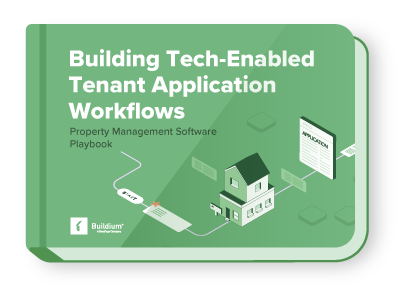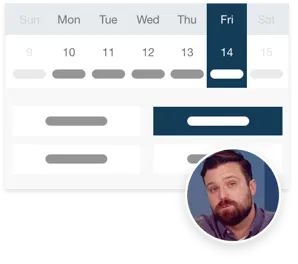Thinking about expanding into new markets or property types? Before you do, make sure your current operations are built to scale. Without a solid foundation, diversifying your business could hurt your bottom line rather than boost it.
Start your free trial today!
Try Buildium for free for 14 days. No credit card needed.
Start Your TrialIn this post, we’ll explore six ways to button up your processes, so you can grow sustainably and avoid common setbacks as you expand.
Why It’s Important to Prepare Before Diversifying
Anytime you diversify your portfolio, you introduce complexity into your business, whether that’s different property types, new markets, or more stakeholders. By establishing robust operational workflows upfront, you can minimize the growing pains and maintain consistency across your business.
Consequences of Rushing Into Growth
If you grow your property management business too fast, you risk overlooking important details and making costly mistakes. For example, you might violate housing regulations in a new market with different rules, misreport important financial metrics, or frustrate owners with inconsistent workflows. If you’re not careful, you could eventually lose business and profits.
Now let’s look closer at some top ways to tighten up your internal processes before expanding:
#1: Standardize Your Core Operations
Preparing for growth starts with standardizing your core operations. Clear, repeatable processes reduce confusion and save time as your business expands.
Lease Management
Leases are the foundation of your tenant relationships. To ensure each relationship gets off on the right foot, create consistent lease templates for each new property type and jurisdiction. Buildium’s free state-specific lease templates is a good place to start.
Next, digitize the lease signing process for faster turnarounds. For example, Buildium offers seamless e-signing powered by Dropbox Sign, eliminating the back-and-forth of physical signatures. Buildium partner PropUp® helps you leverage live data to automate unit turns and track time and money in each step of your turnover workflow.
Lastly, establish regular audits to ensure you comply with local landlord-tenant laws. The last thing you want is to face fines for violating housing regulations you didn’t know about when expanding into a new market or property type.
Rent Collection and Payment Processing
As a property manager, you don’t get paid unless the owner does. To facilitate consistent, on-time rent payments, consider automating rent reminders and letting tenants set up automatic bank payments. Buildium’s online rent collection features let you do both.
Of course, late payments do happen so set clear late payment policies. Buildium can automatically trigger late fee charges once rent is past due and reconcile incoming payments across units and accounts. This helps keep transactions up to date.
Maintenance Coordination
If you haven’t already, implement a standardized system for receiving and triaging maintenance requests. For example, Buildium’s maintenance management features let you accept, assign, track, and resolve work orders from a central platform.
Over time, you can track vendor performance, including response times and resolution rates, to build a preferred network of contractors with strong service-level agreements.
#2: Strengthen Financial Reporting and Budgeting
A robust financial reporting system helps you measure your performance across new markets and property types, so you can make smarter, more informed decisions.
Implement Property-Level Budgeting
Start by creating property-level budgets. These should project expected income and expenses, including maintenance, capital expenditure (CapEx), turnover, and vacancy costs. Set revenue and expense benchmarks for each new property based on the available historical data.
Centralize Accounting Systems
For clean reporting, use a consistent chart of accounts across your portfolio. Include basic financial categories like assets, liabilities, equity, revenue, and expenses.
From there, you can reduce manual accounting errors by automating recurring entries and reconciling bank accounts. For example, Buildium can automatically reconcile your bank statements to give you a complete picture of your portfolio finances at any time.
Prepare for Portfolio Segmentation
Create reporting structures by asset class, geography, and ownership group. This will help you generate personalized owner statements and tax documents as your portfolio grows and you have to report to more stakeholders.
#3: Document and Delegate Internal Processes
It’s tough to grow your business without documenting and delegating internal processes. Your team may struggle to stay consistent, especially as you take on more units or clients.
Clarify Team Roles and Responsibilities
To avoid confusion and duplicate work, make sure that every staff member understands their role by clearly mapping out responsibilities and handoff points between leasing, accounting, and maintenance teams. This makes it easier to identify any gaps that need to be filled or areas of overlap that need to be eliminated.
Train for Consistency and Scale
Create standard operating procedures (SOPs) for repeatable processes like leasing, onboarding, and maintenance. Then train your staff on them so you can delegate. You may also want to cross-train staff on different SOPs to cover all your bases.
Do the same for onboarding new hires. Create repeatable training programs that you can hand off to onboarding staff. The more processes you record, the more you can delegate. You can also use solutions such as LeadSimple® to automate operations and team training.
#4: Evaluate Your Tech Stack for Scalability
Your tech stack can help or hinder your expansion plans. Make sure you’re well-equipped for growth by doing the following.
Audit Current Property Management Software
Carefully assess your current property management software. Does it support multiple markets and property types (residential, commercial, HOA, etc.)? Identify any other feature gaps that could hinder growth, such as limited reporting, accounting, or maintenance tracking features.
Eliminate Redundant Tools
Next, identify any overlapping tools. For example, you may have more than one tool for marketing, inspections, or tenant communication. See if you can eliminate redundant software to save on costs and simplify workflows.
Plan for System Upgrades
If you’re using outdated software or still relying on manual processes, it’s time to upgrade. Choose a property management platform that can scale with your business. Prioritize automation and centralization over piecemeal add-ons that lead to clunky workflows.
For example, Buildium is an all-in-one platform well-suited for growth. Whether you only manage a few doors or thousands, it can flex to your needs.
#5: Build a Strategic Growth Framework
Instead of expanding your business blindly, take time to build a strategic growth framework that helps you scale with focus and intention.
Define Your Diversification Strategy
First, choose between diversifying by market, property type (commercial, residential, short-term rental, etc.), or even service (maintenance, leasing-only, etc.). Aim to match your diversification strategy to your internal strengths.
Need help breaking into new markets? Consider using a specialized service like UpKeep Media® or Goodjuju® for online support that’s tailored to property managers.
Create an Expansion Playbook
Once you’ve settled on a diversification strategy, it’s time to create a detailed playbook. This means outlining criteria for onboarding new properties or clients and planning how you will conduct due diligence, price properties, and set timeline expectations. The more you plan, the fewer surprises you’ll face.
Align Stakeholders
Before you execute your expansion plan, communicate it with internal staff, owners, and investors. Get everyone on board by showing that your business is operationally prepared for growth. This will help prevent unnecessary confusion and disputes later.
#6: Strengthen Legal and Compliance Infrastructure
Compliance looks different in every market. Knowing the local laws ahead of time helps you avoid costly missteps.
Disclaimer: The details below outline general information to be aware of, but be sure to talk with a legal professional familiar with the regions and property types that you plan to expand into for the most accurate advice.
Review Regulatory Exposure
When breaking into a new market, be sure that you’re licensed, bonded, and insured for the services you will be offering there. Some licenses and policies may carry over from other markets, but some may not, so always verify and get additional licensure or coverage where necessary.
In addition, study up on local fair housing, data privacy, and other real estate laws. At the end of the day, it’s your responsibility to stay on top of them.
Update Contracts and Agreements
Once you have a handle on local regulations, revise your owner contracts and vendor contracts to reflect your expanded service offerings. You may need to partner with new vendors if your old ones won’t service new areas or property types.
Ready to Start Diversifying?
Diversification can open exciting new doors for your property management business, but only if it’s built on a strong operational foundation. When your workflows are disciplined and scalable, diversification becomes a growth strategy instead of a risk.
With Buildium, you can gain the flexibility and customization you need to scale in any direction—whether you’re expanding into new property types, markets, or service offerings.
Get started with a free, no-risk 14-day trial, or schedule a demo today to see how Buildium can support your growth from day one.
Frequently Asked Questions
Why should residential property managers tighten up operations before diversifying?
Because strong, standardized operations lower the risk of costly mistakes and inefficiencies as your business grows more complex.
What internal processes should be standardized before expanding a property management portfolio?
Core processes like leasing, rent collection, maintenance coordination, accounting, and reporting should be clearly documented so they can be repeated and delegated.
How can property managers prepare their teams and systems to handle new property types or markets?
By training staff on documented workflows, aligning responsibilities, and using scalable software that supports multiple property types and regions.
What types of diversification are available to residential property managers?
Property managers can diversify by expanding into new markets, managing different property types (residential, commercial, HOA, etc.), or offering new services like leasing or maintenance.
How can managers tell if they’re ready to diversify?
They’re ready when their current operations run smoothly, reporting is consistent, teams are aligned, and systems can scale without disruption
Read more on Growth

